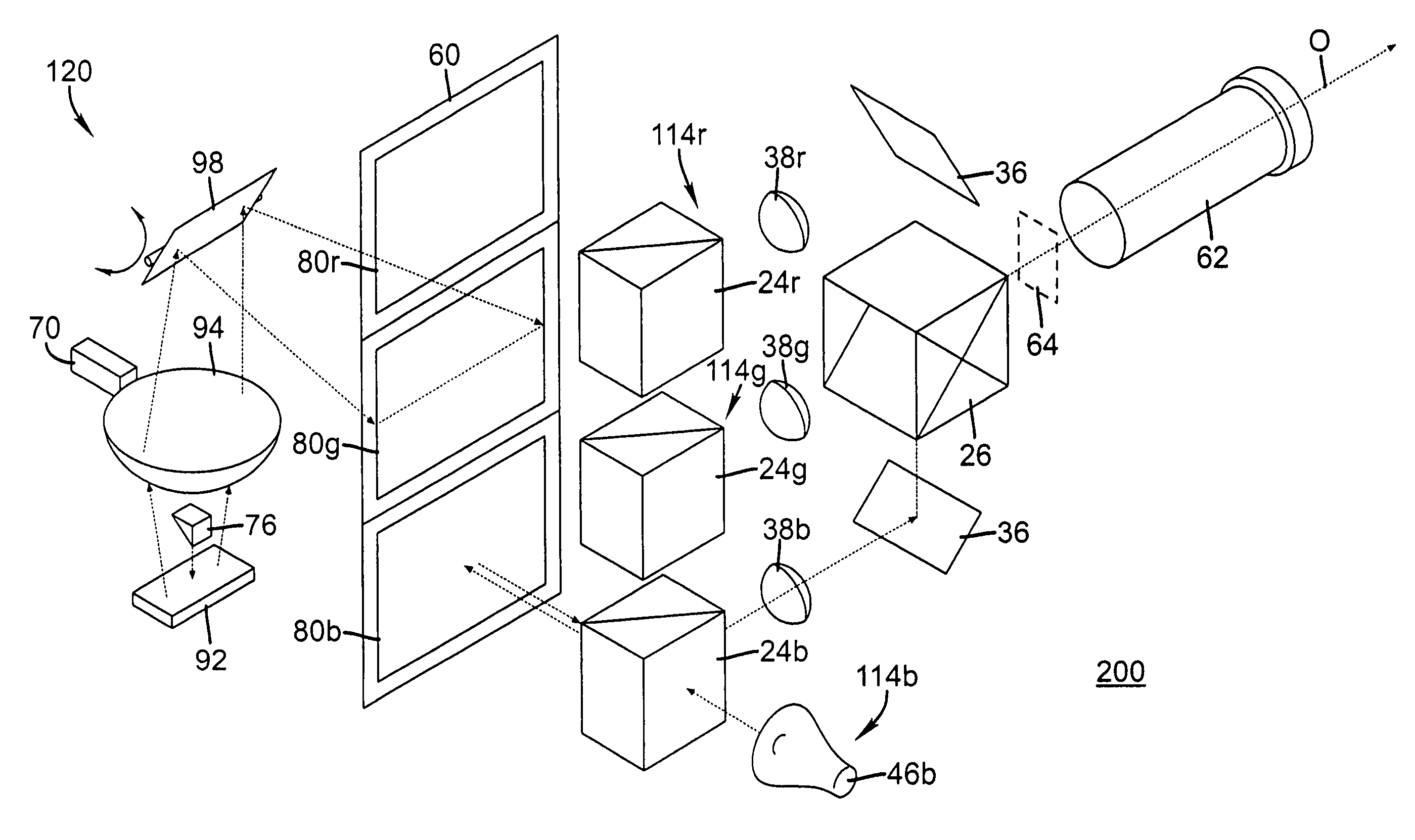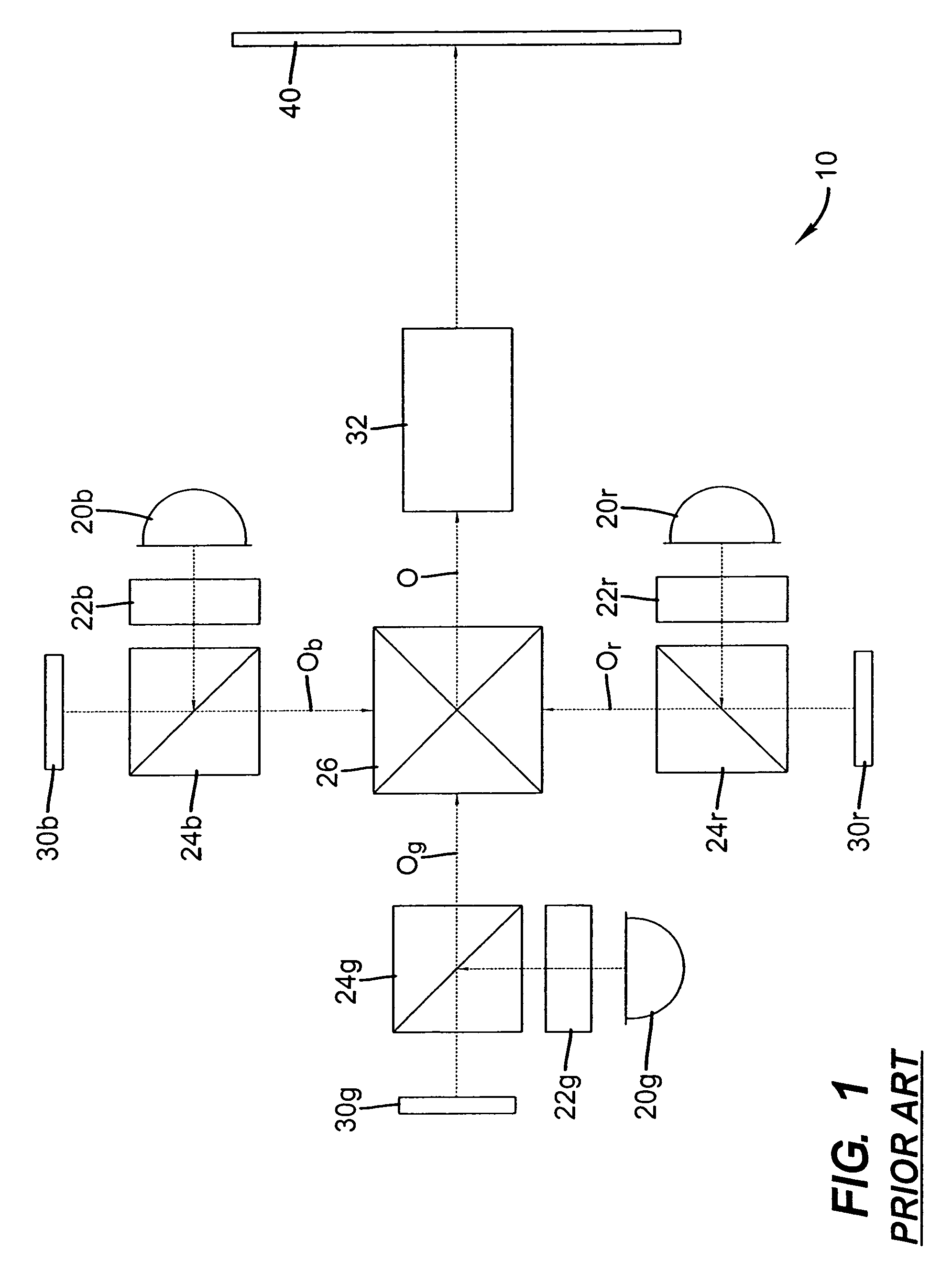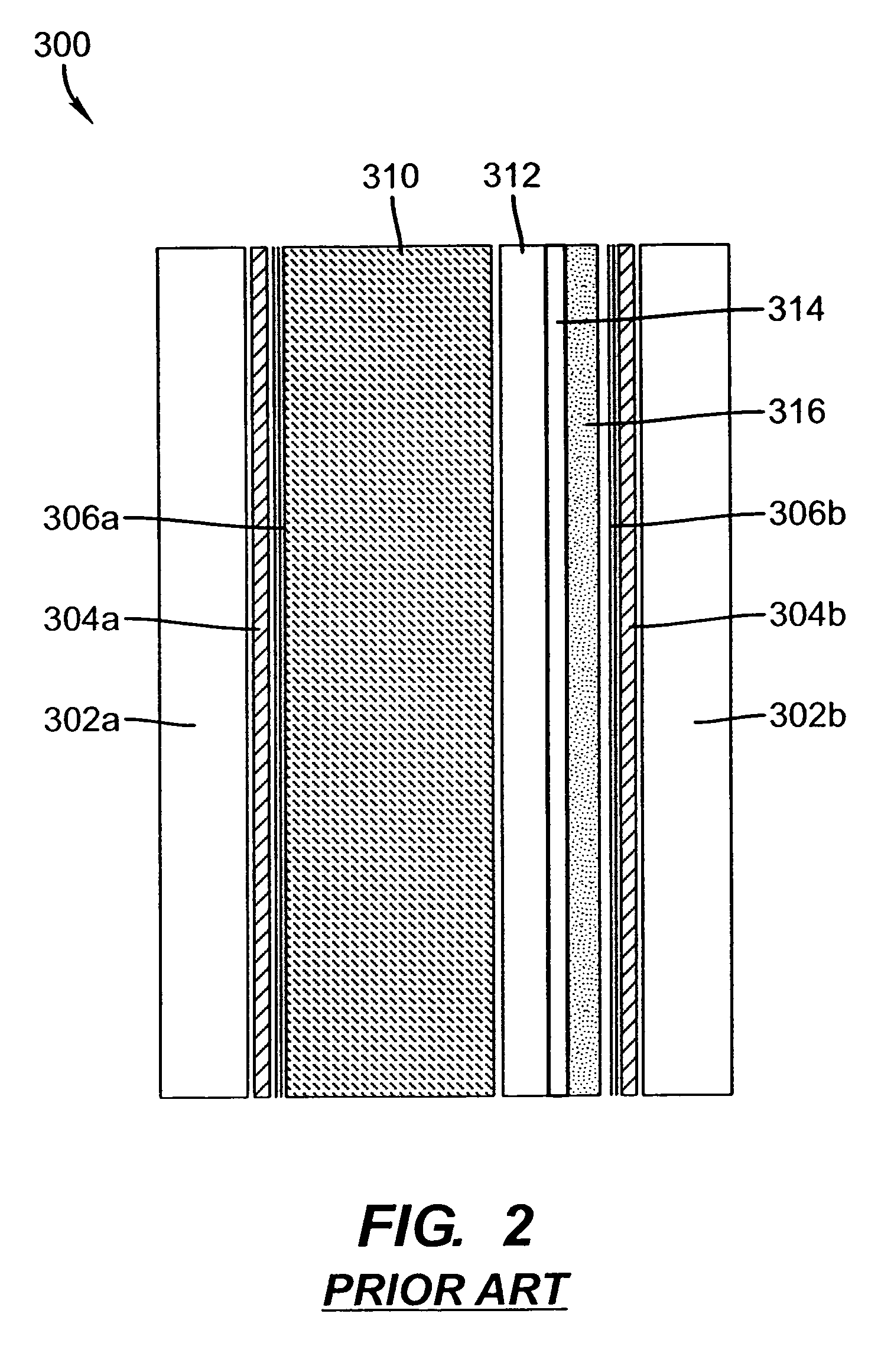High luminance display apparatus using LCD panel
a technology of lcd panel and high luminance, applied in the field of electronic projection, can solve the problems of brightness and efficiency, added complexity and cost, and requirement to handle illumination, and achieve the effect of simplifying optics and adding brightness
- Summary
- Abstract
- Description
- Claims
- Application Information
AI Technical Summary
Benefits of technology
Problems solved by technology
Method used
Image
Examples
Embodiment Construction
[0060]The present description is directed in particular to elements forming part of, or cooperating more directly with, apparatus in accordance with the invention. It is to be understood that elements not specifically shown or described may take various forms well known to those skilled in the art.
[0061]In order to better appreciate the operation of the present invention, it is useful to review the basic operation of a GEMS device. Referring to FIG. 3, there is shown an imaging apparatus 90 for forming an image using a GEMS modulator 92 that uses a linear array of conformal GEMS devices. Light emitted from a narrow-band light source 70, such as a laser or an array of lasers or other devices, is conditioned by a pair of lenses 72 and 74 before being redirected by a turning mirror 76 toward GEMS modulator 92. GEMS modulator 92, controlled by a signal from a control logic processor 102, forms an image one line at a time, by diffraction of the incident light. Non-zero diffractive orders...
PUM
| Property | Measurement | Unit |
|---|---|---|
| areas | aaaaa | aaaaa |
| diameter | aaaaa | aaaaa |
| nominal wavelength | aaaaa | aaaaa |
Abstract
Description
Claims
Application Information
 Login to View More
Login to View More - R&D
- Intellectual Property
- Life Sciences
- Materials
- Tech Scout
- Unparalleled Data Quality
- Higher Quality Content
- 60% Fewer Hallucinations
Browse by: Latest US Patents, China's latest patents, Technical Efficacy Thesaurus, Application Domain, Technology Topic, Popular Technical Reports.
© 2025 PatSnap. All rights reserved.Legal|Privacy policy|Modern Slavery Act Transparency Statement|Sitemap|About US| Contact US: help@patsnap.com



